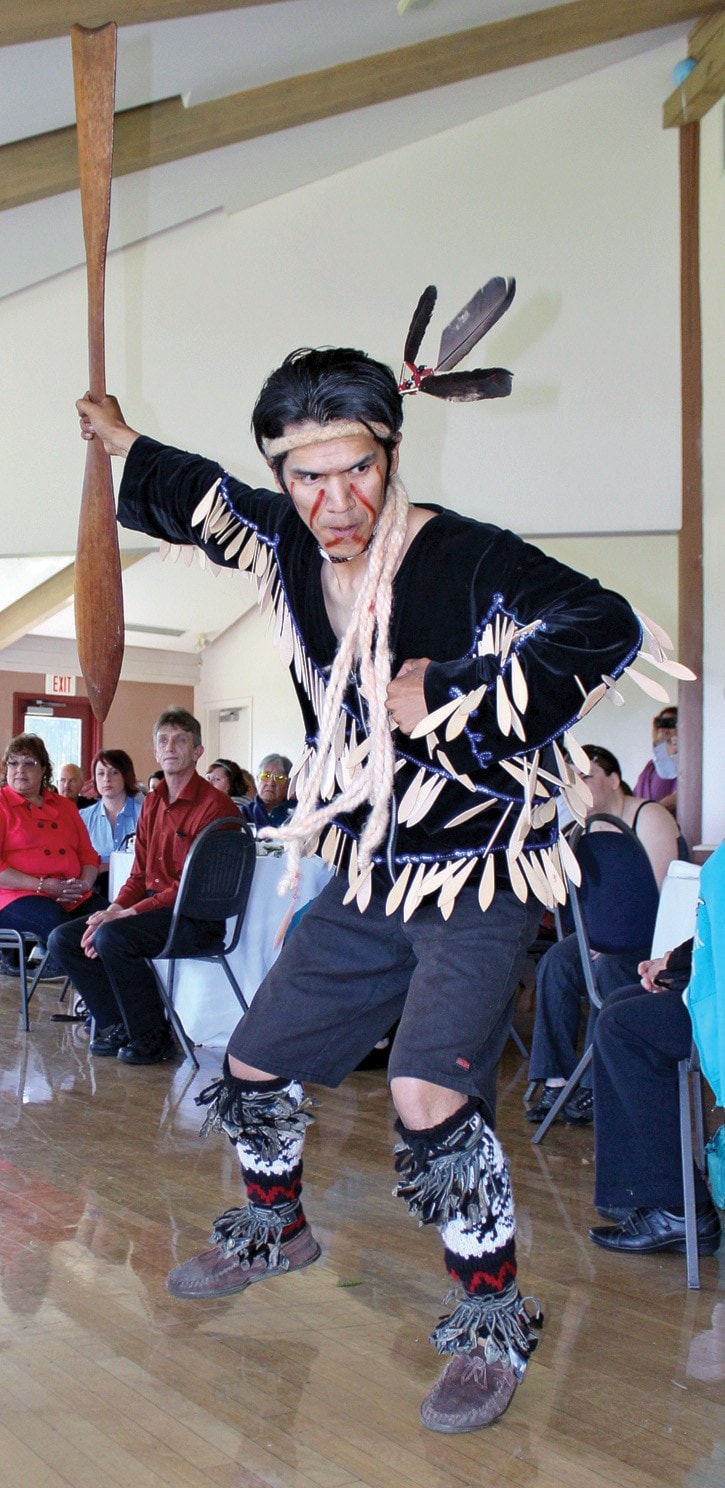At a gathering like this, it would be an understatement to call residential schools the elephant in the room. The profoundly flawed attempt to assimilate generations of aboriginal people has left such an impact, it feels more like the room is inside the elephant.
On June 15, the largest class of social workers ever to graduate from Caring for First Nations Children Society shared a meal at the Juan de Fuca field house before heading off to try and do a better job of protecting some of the most vulnerable kids in the province.
At the CFNCS Langford office, trainees experience morning prayers, drum songs and sharing circles as well as classroom work on the intricacies of working in aboriginal communities.
“They’re going to understand how to connect with families in a real, respectful way,” said Gail Roach-Leforte, training manager at CFNCS, as she looked over the group that came from First Nation communities as far away as Cranbrook.
The 80 or so people in attendance recently completed the course at the society’s Granderson Road office.
The Langford-based agency, which relies on both government and private funding, runs provincially mandated training for social workers employed by Aboriginal Child and Family Services Agencies in BC.
“Things have really changed,” Roach-Leforte said, about her experience over the two years she’s worked at the society. “When I came, there was one drum and it was rarely used.”
Now there are 16.
The 22 delegated agencies in B.C. were created to administer child protection services in aboriginal communities.
Social workers hired by the agencies are required to have training that will enable them to see their roles through the lens of aboriginal culture. To do that, they first have to understand the legacy of residential schools and the damage wreaked by misguided attempts to wipe out that very culture.
Ian Clark, a trainer/instructor with CFNCS, said there used to be an authoritarian attitude among social workers during the era of residential schools, which lasted from the 19th century until as late as 1996.
“We really emphasize the history of child welfare practises in this country, particularly in British Columbia,” Clark said, explaining that the legacy of being seen as authority figures who made up rules often created a deep distrust of officials.
Now, the emphasis is on empowering families and their community to keep kids safe as close to home as possible.
That means understanding traditional support networks, such as grandparents, who can be called on to provide a sanctuary if needed.
Historically, that was the way communities would look out for their children and families.
The shift to relying on the state for protection eventually led to the infamous ’60s scoop. The Euro-centric mentality that pervaded the era believed children could be “saved” by replacing their aboriginal culture with a mainstream identity. Generations of kids were taken from their homes and grew up never learning how to parent because they never saw how it was done.
“I think it’s fair to say there’s a poor track record for caring for children who came into care of the ministry,” said Ray Bronson, the province’s director of delegated aboriginal agencies.
“There are going to be times, absolutely, when you’re going to have to remove someone to keep them safe,” said Bronson, who spoke to the grads about the challenges they can expect as they begin their careers. The job is not for everyone and often can feel like you’re “damned if you do and damned if you don’t.”
However, there are successes. Those times when social workers manage to support people to make needed changes – such as overcoming addiction – to allow them to remain part of their kids’ lives.
Bronson said it will take generations before the damage left by residential schools can be considered healed.
“With aboriginal children, it’s doubly important for them to know their culture,” Bronson said, noting the government’s reach diminishes greatly as children grow into adults. “Once kids age out of care, they go searching for their identity, go searching for their families.”
That search takes an emotional toll that can lead to addiction and despair and often creates a new generation of parents who make poor choices.
It’s a cycle that modern social workers hope to end by figuring out the strengths in a child’s family and how to use them to keep kids in a community they’re familiar with.
Lee Smith, a guardianship worker with Surrounded by Cedars based in Victoria, was among the trainees who graduated June 15.
She said she’s seeing more and more aboriginal people choosing to do social work. Still, there are many people in the field who don’t have any personal connection to First Nations culture.
“In my experience, working with people from the ‘mainstream,’ there’s not a lot in the history books that acknowledges aboriginal history,” said Smith, who considers herself Metis but wasn’t brought up on a reserve.
During the training at CFNCS, she noticed many of her colleagues develop a new appreciation for clients after learning about cultural differences, and, of course, the pitfalls that permeate many communities scarred by the residential school experience.
“This is it. This is the core program to teach someone without an aboriginal background about that knowledge, about respect.”
editor@goldstreamgazette.com
• Sharing the Journey is a series of features stories running in the Gazette on First Nations in our community
Part 1: Aboriginal traditions help teach English to Belmont high school students
Part 1 (b): Blending culture, history and pride shows real results in the classroom
Part 2: Training helps social workers better understand cultural strengths of First Nations
